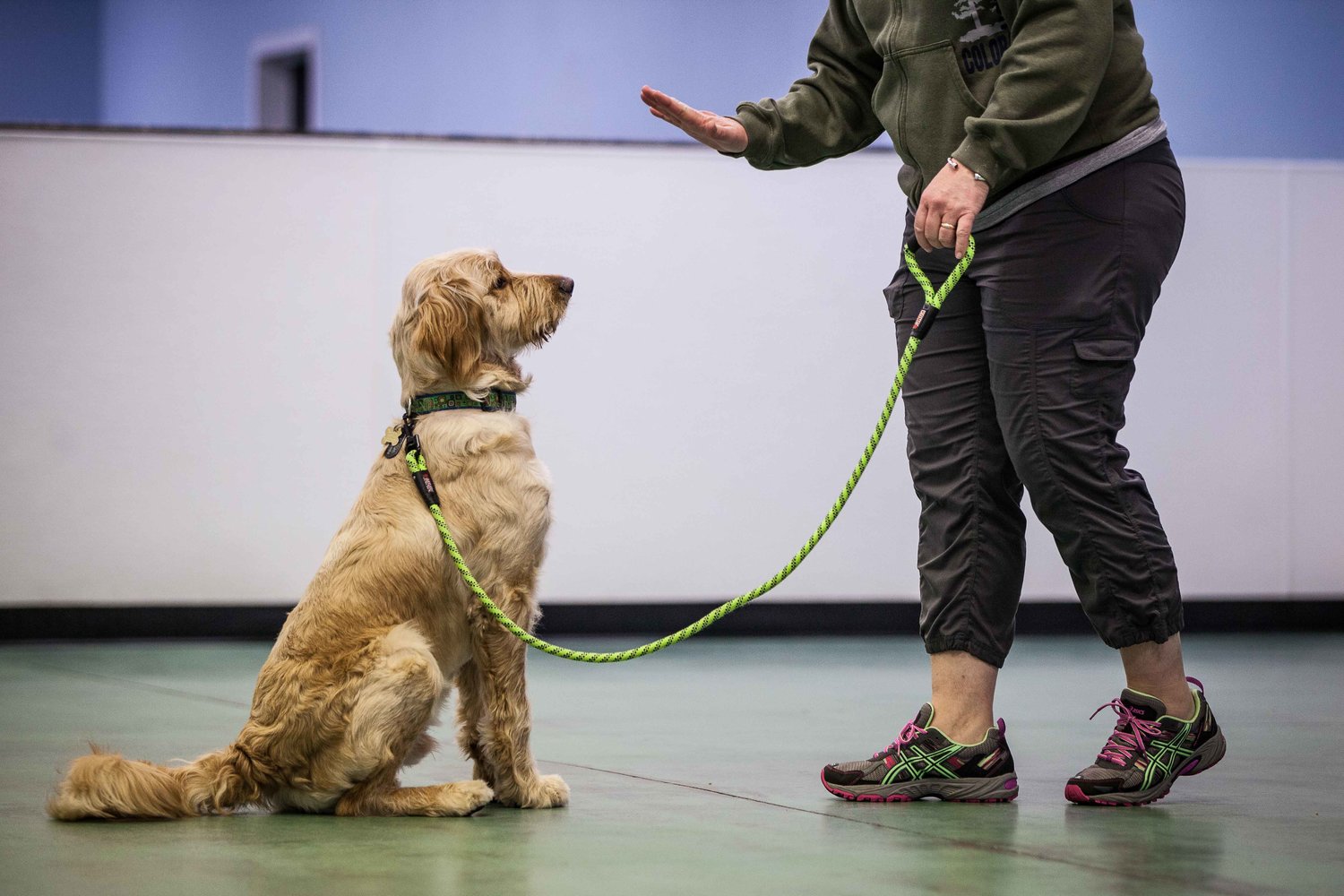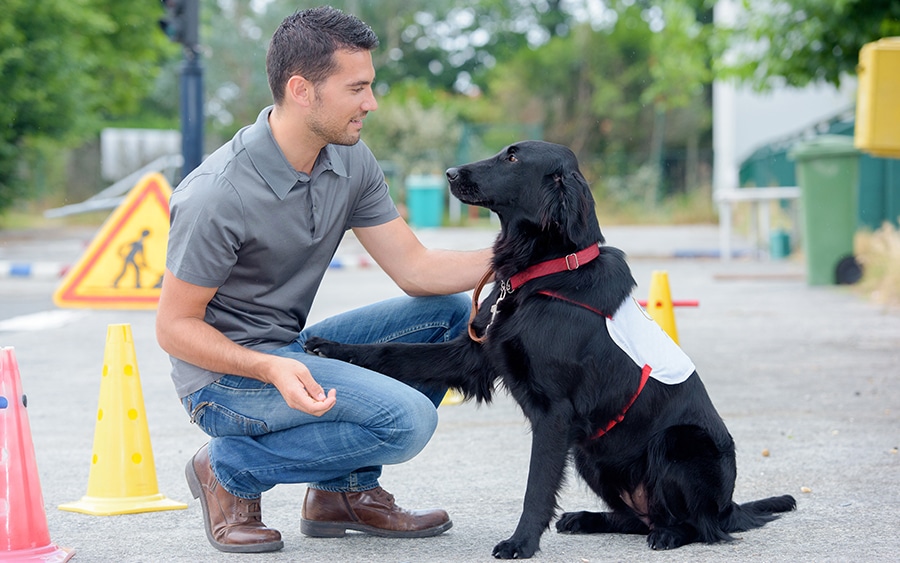Essential Tips for Successful Dog Training: A Guide for Beginners
Newbie's Guide to Effective Pet Dog Training at Home
Efficiently educating a pet in your home requires a nuanced understanding of canine behavior and effective interaction techniques. Developing clear training objectives, utilizing top notch rewards, and keeping consistency throughout relative are essential aspects. Integrating training into everyday routines can improve both involvement and retention. However, many amateur trainers come across challenges that might hinder development. To navigate these intricacies efficiently, it's important to discover several crucial facets that can transform your technique and bring about an unified relationship with your animal. What basic principles should every beginner understanding to make certain success?
Comprehending Pet Dog Habits
Comprehending pet actions is essential for effective training and cultivating an unified partnership in between human beings and their canine buddies. Pet dogs interact mainly through body movement, articulations, and faces, making it crucial for proprietors to translate these signals precisely. Recognizing habits such as tail wagging, roaring, or cring can supply insights into a pet dog's emotional state and objectives.

Usual behavior issues, such as hostility, anxiety, or too much barking, frequently come from misconceptions or unmet demands. Observing and attending to these concerns promptly can prevent acceleration and make certain a positive training experience. By promoting a deep understanding of pet dog actions, proprietors can tailor their training methods to fit their canine buddies, ultimately leading to a well-behaved and pleased pet dog.
Essential Educating Tools
A well-equipped training area can significantly enhance the performance of dog training in the house. Important training devices make certain that both the dog and the trainer can take part in productive sessions that foster knowing and bonding.

Spending in a tough leash and a comfy, well-fitting collar or harness is important for safety and control. These devices aid develop borders and make sure the pet dog stays safe during training. In addition, a marked training location, devoid of distractions, help concentration for both the pet dog and the instructor.
Educating aids such as training pads, cones, or agility devices can additionally improve the experience by introducing selection and challenges. Having a note pad or electronic application for tracking progression can be vital, permitting you to note successes and locations for enhancement. Using these necessary tools will certainly create a positive training environment and lay the foundation for efficient learning.
Developing a Training Regimen
Establishing a consistent training regimen is important for effective pet training in the house. A well-structured regular not only helps in strengthening wanted behaviors yet also supplies your dog with a sense of protection and predictability. To produce a reliable training regular, start by identifying certain training goals, such as standard commands, chain walking, or housebreaking.
Pick a designated time every day for training sessions, ideally when your dog is alert and responsive. Sessions should be brief, roughly 5 to 15 mins, to maintain emphasis and avoid fatigue. Uniformity in timing and environment will boost your pet's learning experience.
Incorporate training right into day-to-day activities to strengthen abilities. For example, practice commands during strolls or mealtime, which incorporates finding out right into all-natural routines. In addition, remain flexible and readjust the routine as required, fitting your pet dog's power degrees and state of mind.
Positive Reinforcement Strategies
Favorable support strategies are essential to effective dog training, promoting wanted actions through benefits instead than penalty. This method utilizes favorable stimulations, such as deals with, appreciation, or playtime, to encourage pets to duplicate specific activities. The keystone of this approach is timing; benefits should be given quickly adhering to the desired habits to develop a clear organization.
When applying favorable reinforcement, it is vital to select incentives that are motivating for your canine. High-value treats, such as tiny items of hen or cheese, can be particularly efficient throughout training sessions. Additionally, differing the incentives can maintain your pet dog's rate of interest and excitement.
Beginning with straightforward commands, like "rest" or "stay," and progressively progress to extra complicated jobs. Uniformity is crucial; ensure that all member of the family make use of the same commands and reward systems to avoid complication.
Additionally, it is vital to stay client and prevent aggravation. Dogs, like humans, find out at their own pace. By promoting a helpful training atmosphere through favorable reinforcement, you can boost your canine's learning experience while reinforcing the bond between you and your furry companion, preparing for effective training end results.
Typical Educating Difficulties
While educating a canine in your home can be a fulfilling experience, it typically features a set of common difficulties that can test both persistence and uniformity. One widespread issue is interruption. Pet dogs may come to be conveniently averted by sounds, activities, or also fragrances in their setting, making it challenging to keep their emphasis during training sessions.
One more obstacle is her latest blog disparity in commands and reinforcement. It can puzzle the canine and hinder development if family participants use various hints or incentives. Developing a unified method is crucial for read the full info here reliable interaction.
In addition, dogs can experience disappointment or tension, specifically if they do not understand what is expected of them. This can result in unwanted actions, such as chewing or barking.
Ultimately, the timing of reinforcement is crucial (Dog training). Delayed benefits can lessen the performance of favorable support, as pet dogs may fall short to attach the habits with the reward
Conquering these difficulties requires dedication, clear interaction, and a structured training strategy. Acknowledging and addressing these usual barriers will certainly lead the way for a more effective and satisfying training experience in your home.
Conclusion
In final thought, effective pet training at home requires a thorough understanding of canine actions and reliable interaction methods. By developing clear training goals and using high-grade deals with together with positive support, the training procedure comes to be extra satisfying for both the fitness instructor and the dog.
Developing a consistent training routine is important for efficient canine training at home.Positive support methods are essential to efficient canine training, promoting wanted habits via benefits rather than penalty (Dog training). By promoting a supportive training environment with positive support, you can improve your canine's knowing experience while reinforcing the Visit Website bond in between you and your furry companion, laying the groundwork for successful training results
In conclusion, successful pet dog training at home requires an extensive understanding of canine behavior and efficient communication strategies. By developing clear training goals and utilizing premium treats along with favorable reinforcement, the training process comes to be a lot more fulfilling for both the dog and the instructor.